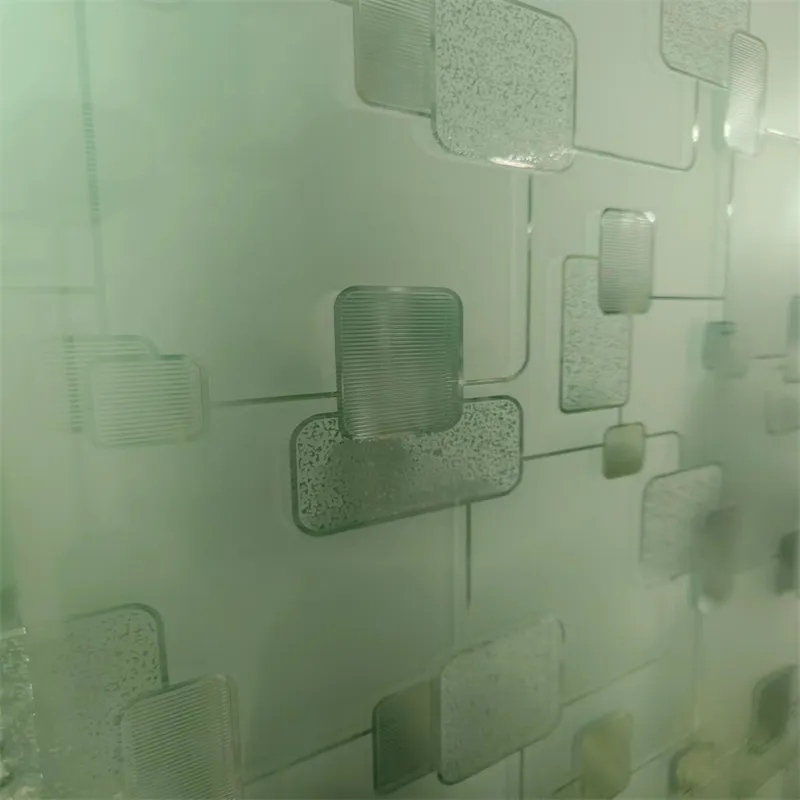Dec . 03, 2024 11:35 Back to list
what is tempered laminated glass
Understanding Tempered Laminated Glass
Tempered laminated glass is a type of safety glass that combines two advanced glass engineering techniques tempering and laminating. This innovative material is widely used in various applications, from architectural structures to automotive windshields, thanks to its superior strength, safety features, and aesthetic appeal.
What is Tempered Glass?
Tempered glass, also known as toughened glass, undergoes a process of extreme heating and rapid cooling during manufacturing. This process increases the glass's strength, making it significantly more resistant to impact, thermal stress, and breakage compared to ordinary glass. When fractured, tempered glass shatters into tiny blunt pieces rather than sharp shards, reducing the risk of injury.
The tempering process typically involves heating the glass to temperatures exceeding 600 degrees Celsius and then quickly cooling it. This results in a glass that is approximately five to six times stronger than untreated glass of the same thickness. Due to these characteristics, tempered glass is often used in environments where safety is a primary concern, such as in shower doors, glass facades, and bi-fold doors.
What is Laminated Glass?
Laminated glass consists of at least two layers of glass interlayered with a polymer, often polyvinyl butyral (PVB) or ethylene-vinyl acetate (EVA). The interlayer provides strength and security, holding the glass layers together even upon impact. If the glass is broken, the fragments adhere to the interlayer rather than creating dangerous shards, which makes this type of glass an excellent choice for safety and security applications.
Laminated glass can also provide added benefits such as improved sound insulation and UV protection, making it ideal for use in buildings, particularly in urban environments where noise pollution is a concern. Furthermore, laminated glass can enhance the security of residential and commercial properties, as it is more difficult to break through compared to single-layered glass.
Combining Tempered and Laminated Glass
Tempered laminated glass combines the strengths of both tempering and laminating. The outer layer of tempered glass provides increased resistance to impact and thermal stress, while the laminated interlayer enhances safety by preventing shards from scattering when broken. This dual functionality is particularly appealing for architectural applications where safety and aesthetics are critical.
what is tempered laminated glass

In buildings, tempered laminated glass is often used in windows, skylights, and facades. It ensures both the structural integrity of the building and the safety of its occupants. The use of tempered laminated glass can also contribute to energy efficiency in buildings, as multiple layers can help with insulation.
In automotive applications, tempered laminated glass is used for windshields, providing safety and shattering resistance for drivers and passengers
. The glass remains intact during accidents, minimizing the risk of injuries from flying shards, thus meeting stringent safety regulations.Advantages of Tempered Laminated Glass
1. Enhanced Safety One of the most significant advantages of tempered laminated glass is its safety features. The combination of tempering and laminating ensures that even in the event of breakage, the glass remains bonded, reducing the risk of injury.
2. Strength and Durability This glass is designed to withstand higher forces and provides better thermal resistance, making it suitable for challenging environments.
3. Sound Insulation The laminated layer acts as a sound barrier, providing better acoustic comfort for buildings located in noisy areas.
4. UV Protection Laminated glass can block a significant amount of harmful UV rays, protecting interiors and reducing fading of furniture and fabrics.
5. Aesthetic Appeal Available in various finishes, tempered laminated glass allows for design flexibility in residential and commercial projects.
Conclusion
In summary, tempered laminated glass stands out as a versatile and essential material in modern construction and manufacturing. Its unique combination of safety, durability, and aesthetic qualities provides significant advantages in both residential and commercial settings. As safety standards continue to evolve and aesthetic preferences grow, the use of tempered laminated glass is likely to increase, solidifying its place as a vital component in contemporary design and architecture.
-
Safety and Style with Premium Laminated Glass Solutions
NewsJun.24,2025
-
Reinvents Security with Premium Wired Glass
NewsJun.24,2025
-
Premium Float Glass Line for Modern Architecture
NewsJun.24,2025
-
Low Emissivity Glass for Energy-Efficient Architecture
NewsJun.24,2025
-
High-Performance Insulated Glass Solutions for Modern Architecture
NewsJun.24,2025
-
Elevates Interior Style with Premium Silver Mirror
NewsJun.24,2025
Related PRODUCTS














